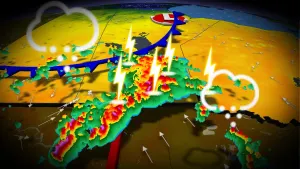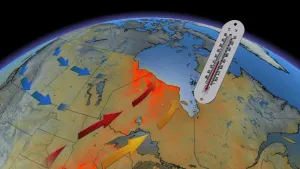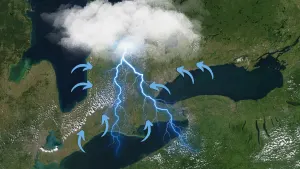
Ontario researchers examine why wildfires and tornadoes have tangly relationship
As another wildfire season gets underway in Canada, researchers with the Northern Tornadoes Project (NTP) at Western University have found a curious link between wildfires and tornadoes.
"One thing that we've noticed over the last few years is that when we have a really big fire year like last year, we tend to get less tornadoes," said David Sills, executive director of the NTP.
SEE ALSO: Canada accounted for 43% of people displaced by wildfires globally in 2023
According to data from the London, Ont., university, Canada experienced a record-breaking 129 tornadoes in 2022. In 2023, amid the worst wildfire season this country has ever seen, there were just 86 twisters.
It's an unexpected parallel, one Sills said researchers have yet to fully understand.
There are theories, though.
Where there's smoke
"We get a lot more forest fire smoke that blows across the country when we get these big fire years," Sills said, "and having that smoke up there really cuts down on the amount of sunlight getting down to the ground and heating the ground, and providing instability for thunderstorms."
Last year, Canada saw some 18 million hectares of its vast forests go up in smoke, resulting in eight deaths and tens of thousands of people fleeing their homes. As the fires burned, blankets of smoke drifted across the continent, smothering Canadian and U.S. cities in an acrid fog so thick that it rolled back decades of air-quality gains.
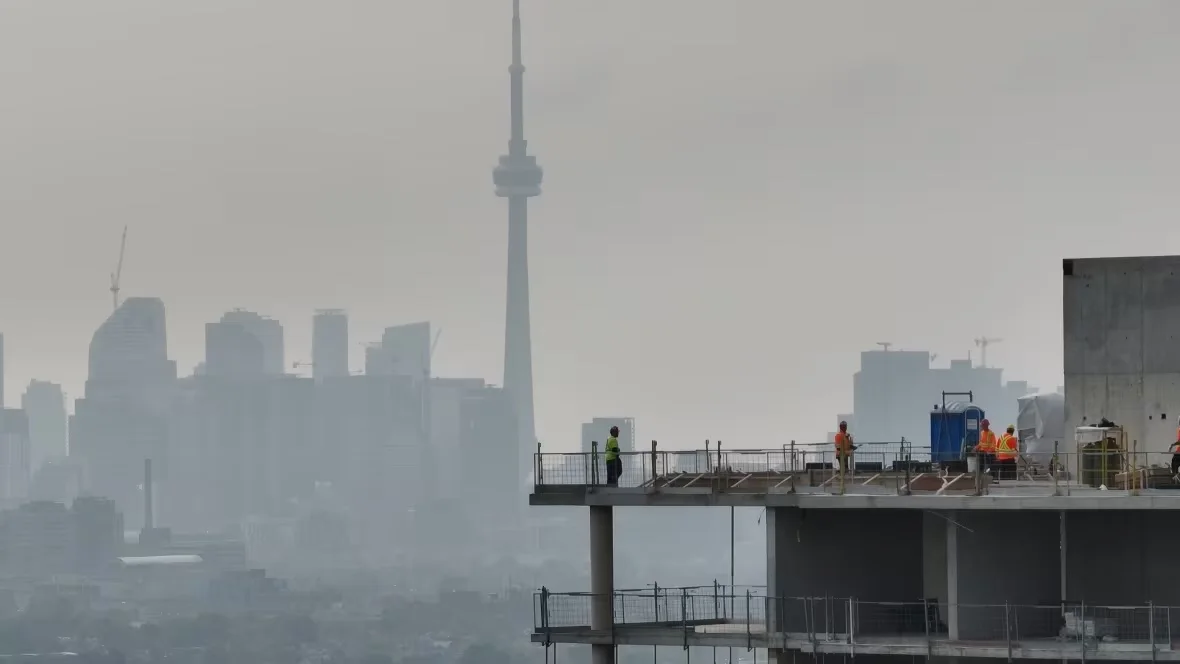
Construction workers go about their business against a smoky Toronto skyline on June 28, 2023. The University of Toronto said that day that the city had some of the worst air quality in the world as smoke from wildfires in northeastern Ontario and Quebec moved into the city. (Patrick Morrell/CBC)
That continent-spanning veil of wood smoke, Sills said, seems to have a diminishing effect on the size and power of thunderstorms.
"We saw that last year. There were the same number of storms as usual, but their intensity was notably less. If that's the case, the chance of getting a tornado with a less intense storm is obviously less as well.
"So it might be an explanation for why we're getting less tornadoes when we think there's more fire going on."
Tornado activity is moving east
Connecting the dots between particularly intense wildfire seasons and how it affects weather across the continent might take some time, especially when researchers are noticing historical tornado patterns are shifting.
The NTP recently created an online portal on 40 years worth of scientifically collected information on tornadoes from 1980 to 2020, giving anyone with internet access an unprecedented look at Canada's extreme weather.
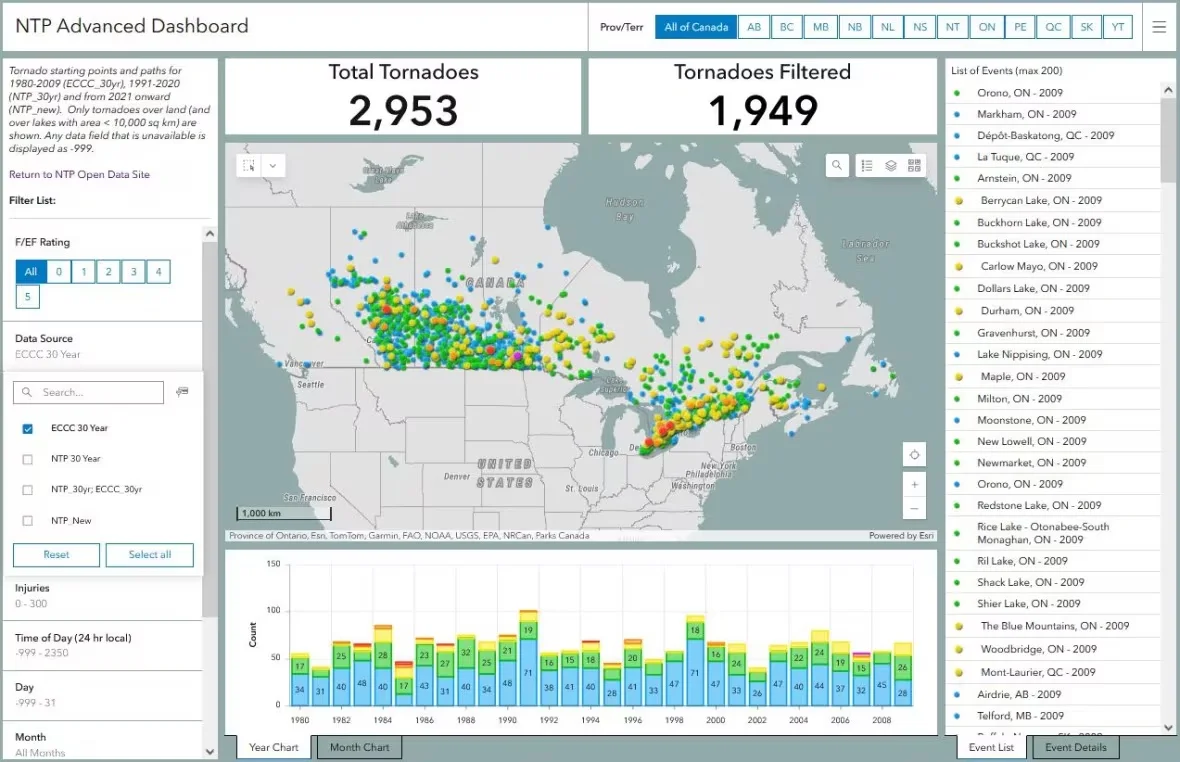
The Northern Tornadoes Project's new advanced dashboard includes data from more than 250 tornadoes over the past four decades that were previously undocumented. (Northern Tornadoes Project)
"I think it's incredibly useful for scientists such as myself," said Geoff Coulson, a warning preparedness meteorologist with Environment Canada.
"The database contains lots of information about not only where tornadoes have occurred over the last number of decades, but the ratings, how long they've been, the width of the damage. ... lots of very useful information for people who want to dig around and learn more about the tornado risk in various parts of Canada."
The open data project has already shown Canada's Tornado Alley — the area of the country where twisters are most likely to occur — has moved eastwards, from Saskatchewan to Ontario, in the last 20 years.
CANADA'S WILDFIRES: Visit The Weather Network's wildfire hub to keep up with the latest on the active start to wildfire season across Canada.
Coulson said that trend, along with the yet-to-be-understood relationship between wildfires and tornadoes, was clearly seen in last year's weather data.
Demystifying the wildfire-tornado link
"We notice it in Saskatchewan last year," Coulson said. "They only had one tornado in in 2023. So with all that fire, of course, the smoke floating around, reflecting some sunlight — that certainly can inhibit the activity.
"We'll have to see what happens this year."

A bird's-eye view of damage to a farm property from one of the three tornadoes that struck in an area of southwestern Manitoba on June 20, 2023. (Submitted by Northern Tornadoes Project)
This year, Canada is already seeing intensifying wildfire activity in part due to a drought that's been intensified by a low snow pack over a warmer-than-usual winter.
Back at Western University, researchers with the NTP will be watching what kind of an effect, if any, this year's wildfire season will have on storms.
"We get asked all the time, 'Are more tornadoes occurring because of climate change?' and we don't have a good answer at this point," Sills said.
"What's interesting about that is, things like droughts and wildfires we know are connected to climate change. If we get more of these things, it may lead to less tornadoes over time due to climate change.
"So these are the things we have to untangle."
WATCH: Detect, track, and attack: How wildfire movements are monitored by the experts
Thumbnail courtesy of BC Wildfire Service via CBC.
The story was originally written by Colin Butler and published for CBC News.







